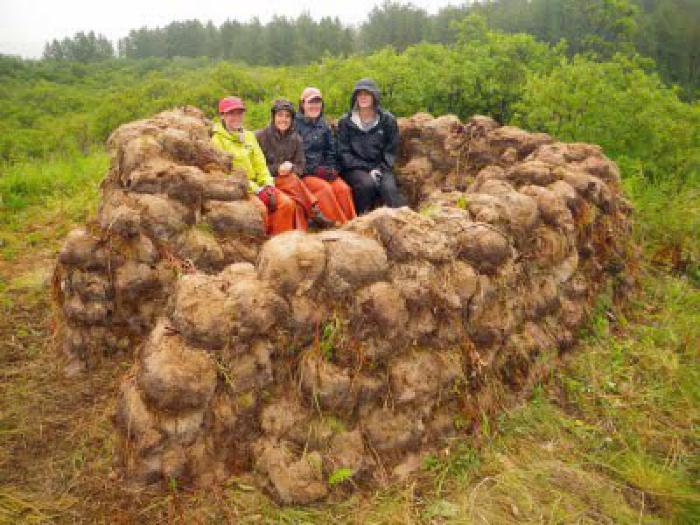Sod — Nikiiq

The lush grasses of Alaska’s coastal meadows produce more than just weaving material for Native people. The thick tangles of roots, which cling to deep underlying layers of soil, were traditionally cut into blocks and used in house construction. Piles of sod were used to line walls and create a warm insulating cover for traditional houses. These roofs were heavy. As such, Alutiiq builders covered the tops of large structures with grass thatching to limit the weight of the roof.
Each fall, Alutiiq people cut sod blocks to renovate their semisubterranean houses. Before the introduction of metal tools, archaeologists believe that Alutiiq people used pointed digging sticks fashioned from sea mammal ribs to harvest sods. Cut blocks were laid on top of the wooden house frame over a layer of beach ryegrass. The grass provided waterproofing, while the sod held the grass in place and acted as insulation.
The use of sod to create warm, durable housing is a practice shared by coastal people from the Gulf of Alaska, the Athapaskans of interiors Alaska, and the Inuit of Arctic Canada. Although many people think igloos—dwellings built from snow and ice—are the most common arctic dwellings, they were not. Aleut and Eskimo peoples have relied on sod for protection from cold, stormy Arctic weather for thousands of years, in many places where it is not possible or practical to build houses from snow.
